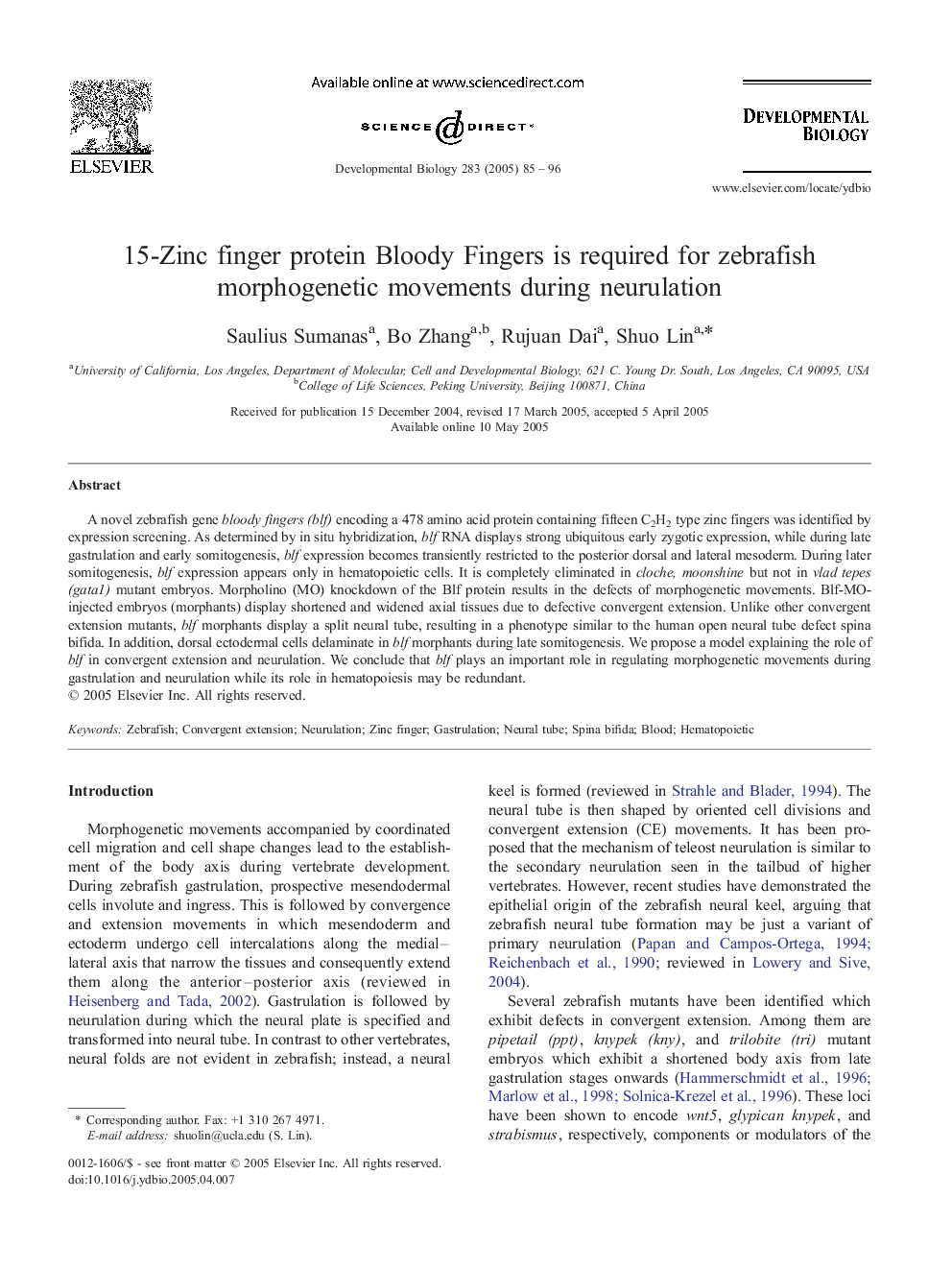| Article ID | Journal | Published Year | Pages | File Type |
|---|---|---|---|---|
| 10934097 | Developmental Biology | 2005 | 12 Pages |
Abstract
A novel zebrafish gene bloody fingers (blf) encoding a 478 amino acid protein containing fifteen C2H2 type zinc fingers was identified by expression screening. As determined by in situ hybridization, blf RNA displays strong ubiquitous early zygotic expression, while during late gastrulation and early somitogenesis, blf expression becomes transiently restricted to the posterior dorsal and lateral mesoderm. During later somitogenesis, blf expression appears only in hematopoietic cells. It is completely eliminated in cloche, moonshine but not in vlad tepes (gata1) mutant embryos. Morpholino (MO) knockdown of the Blf protein results in the defects of morphogenetic movements. Blf-MO-injected embryos (morphants) display shortened and widened axial tissues due to defective convergent extension. Unlike other convergent extension mutants, blf morphants display a split neural tube, resulting in a phenotype similar to the human open neural tube defect spina bifida. In addition, dorsal ectodermal cells delaminate in blf morphants during late somitogenesis. We propose a model explaining the role of blf in convergent extension and neurulation. We conclude that blf plays an important role in regulating morphogenetic movements during gastrulation and neurulation while its role in hematopoiesis may be redundant.
Keywords
Related Topics
Life Sciences
Biochemistry, Genetics and Molecular Biology
Cell Biology
Authors
Saulius Sumanas, Bo Zhang, Rujuan Dai, Shuo Lin,
